Every large city has its tourist highlights. On an average must-see list we can find important monuments, city symbols, and the most popular, characteristic points. It is no different in the case of Gdańsk. Once a fortress, this town, situated by Motława river is a place rich of history. You can feel the spirit of the past here at every turn. Over 1000-year-old Gdansk has many spots where you can hear the echoes of bygone eras. Find out which ones have been included in our Top Ten list!
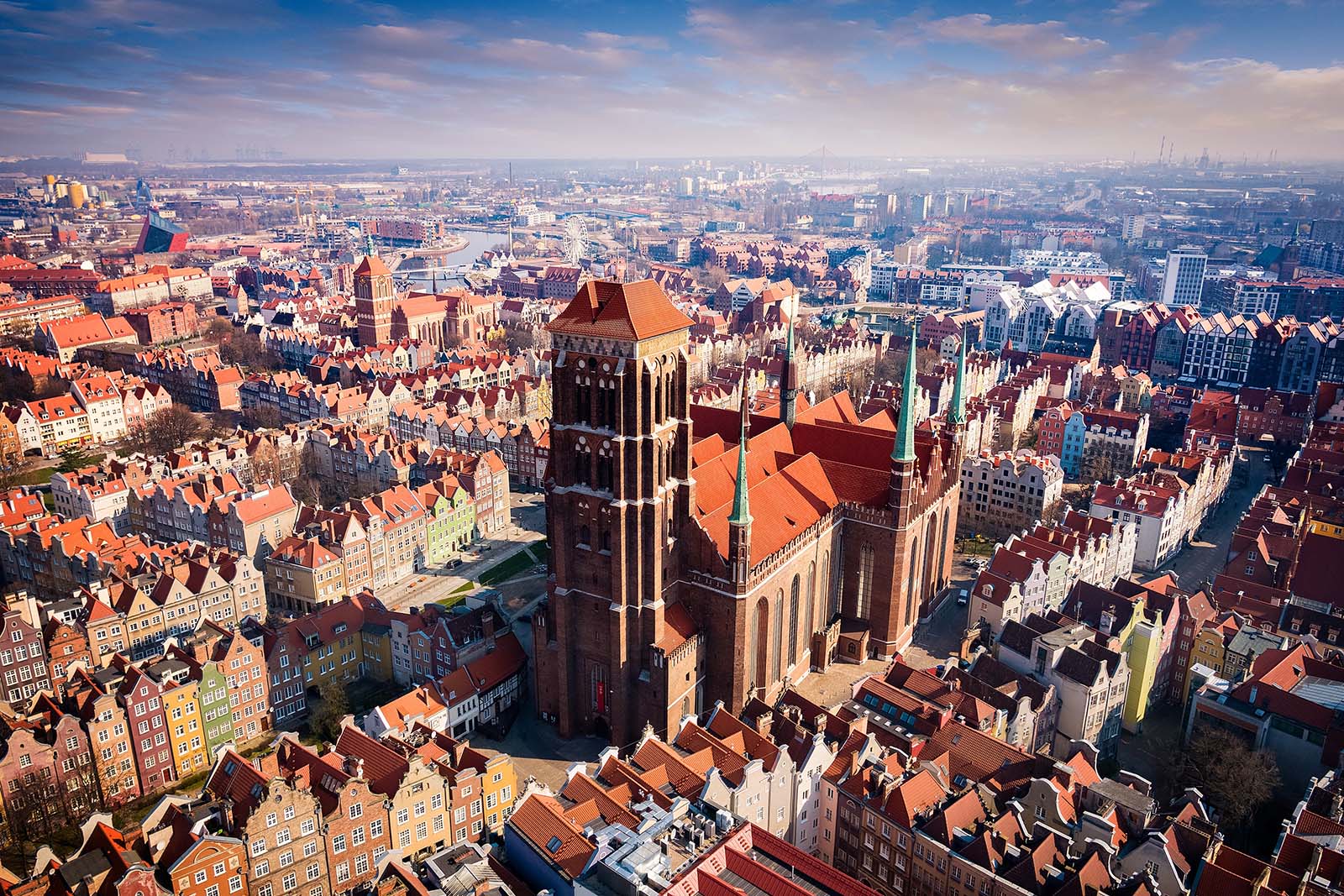
Each of the largest cities: Warsaw, Poznań, Cracow and Wrocław, can rank their most frequently visited places. Usually, the main tourist attractions are located within the Old Town. In the case of Gdańsk, however, we are talking about a slightly wider area – Śródmieście (Eng. inner city). It is composed of two areas: the Old and the Main Town. You can get to know both in detail during our day trips. Which places in Gdańsk are not to be missed? Here are our recommendations.
1. The Neptune Fountain. Did you know that Gdańsk has as many as three Neptunes?
The historic fountain that represents the God of the Seas welding a trident in his hand is one of the main city symbols. It is quite an icon and almost every tourist takes a souvenir photo with it – but only by permission of pigeons that willingly occupy the monument and provide the Neptune with round-the-clock supervision.
The fountain is located in the most representative part of Gdańsk - on Długi Targ (Long Market), right next to the entrance to the Artus Court. The statue of Neptune was designed by the architect and sculptor Abraham van de Blocke. The seventeenth-century fountain, with a statue cast in bronze surrounded by legendary water horses, mermaids, tritons, pelicans, swans, and other sea creatures, is a testimony to the former residents’ fascination with classical culture.
The Neptune was such a popular motif in bourgeois art and architecture that his image was, among others, placed on many Gdańsk tenement houses. There is a place in Gdańsk where there are three of his representations. While walking with our guide, you will have a chance to situate yourself just in just the right direction to see all the Neptunes.
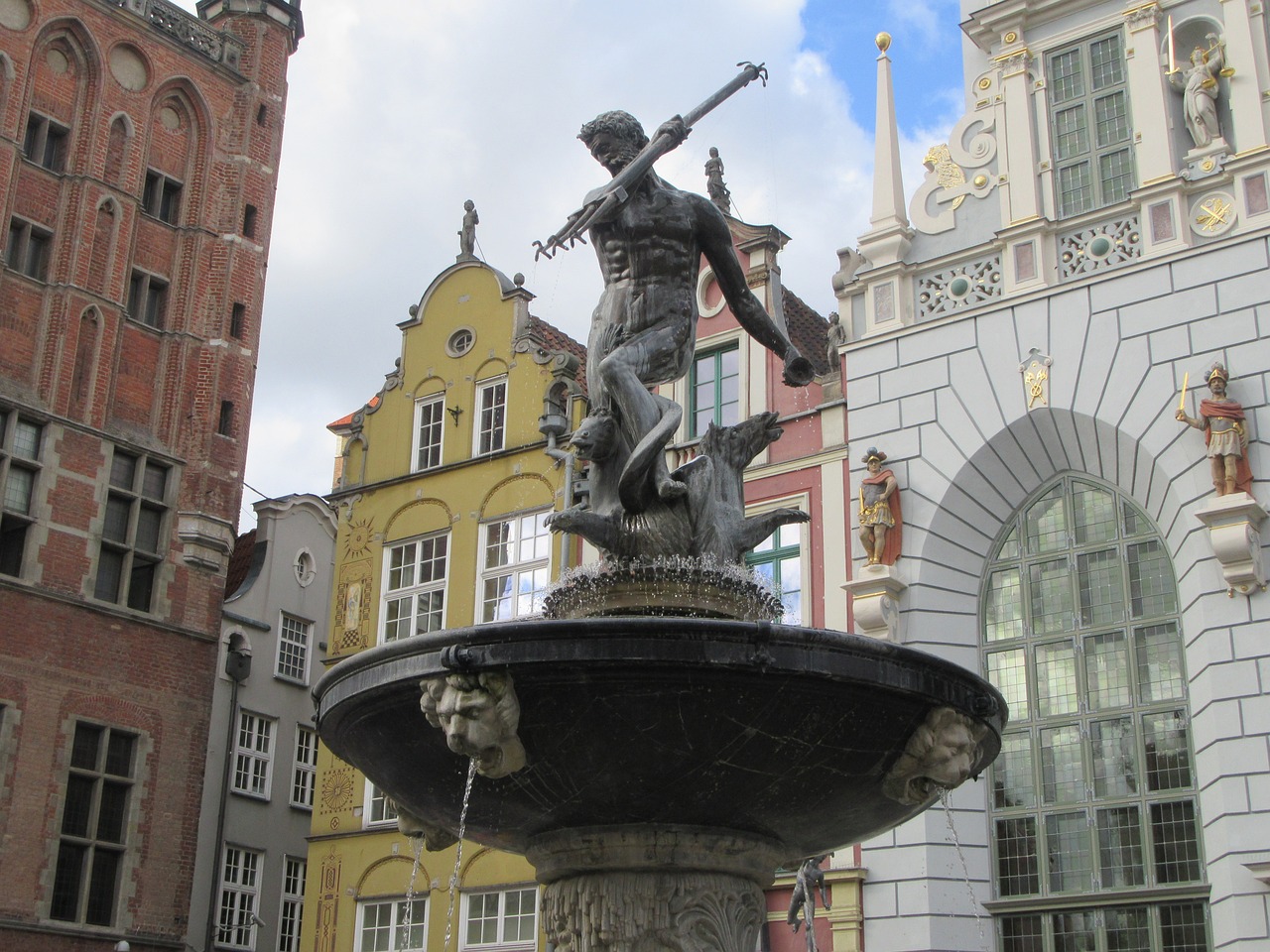
2. The Green Bridge – but is it green for real?
The Green Bridge, which connects the Main Town with Granary Island, is the most famous bridge of the Gdańsk Main Town. Standing there, you can enjoy the view of the Motława River, the 15th-century port crane - Żuraw, the museum ship Sołdek, and the Granaries from the Granary Island.
Over the ages, it was the most important bridge in Gdańsk. Two key communication routes intersected here: water and land. Once, it used to be a drawbridge that allowed ships to pass through; today, it is used only by pedestrians. The western abutment of the bridge lies under the Green Gate.
3. St Mary's Church. How many bricks is it made of?
Saint Mary's Basilica, often called the Crown of Gdańsk, is the largest brick Gothic church in the world. The temple was built in stages for 159 years. It can be seen from nearly every place in the center of Gdańsk. The mighty walls and towers rise high above the city skyline, which makes it a great viewpoint.
To enjoy the view from the top of the temple, you have to climb the tower to a height of over 80 meters and tackle as many as 409 steps. Some of them lead through a narrow, spiral medieval staircase. The church is 105.2 m long and 66.2 meters wide in the transept; the building volume net is 155,000 cubic meters. Inside, 26 free-standing pillars support beautiful stellar and crystal vaults.
When visiting the church, it is worth taking a look at the adjacent Mariacka Street. It is considered one of the most charming streets in Gdańsk, where the old porches have been faithfully reconstructed. Walking through Mariacka will let you plunge into the unique atmosphere and character of the old buildings of Gdańsk.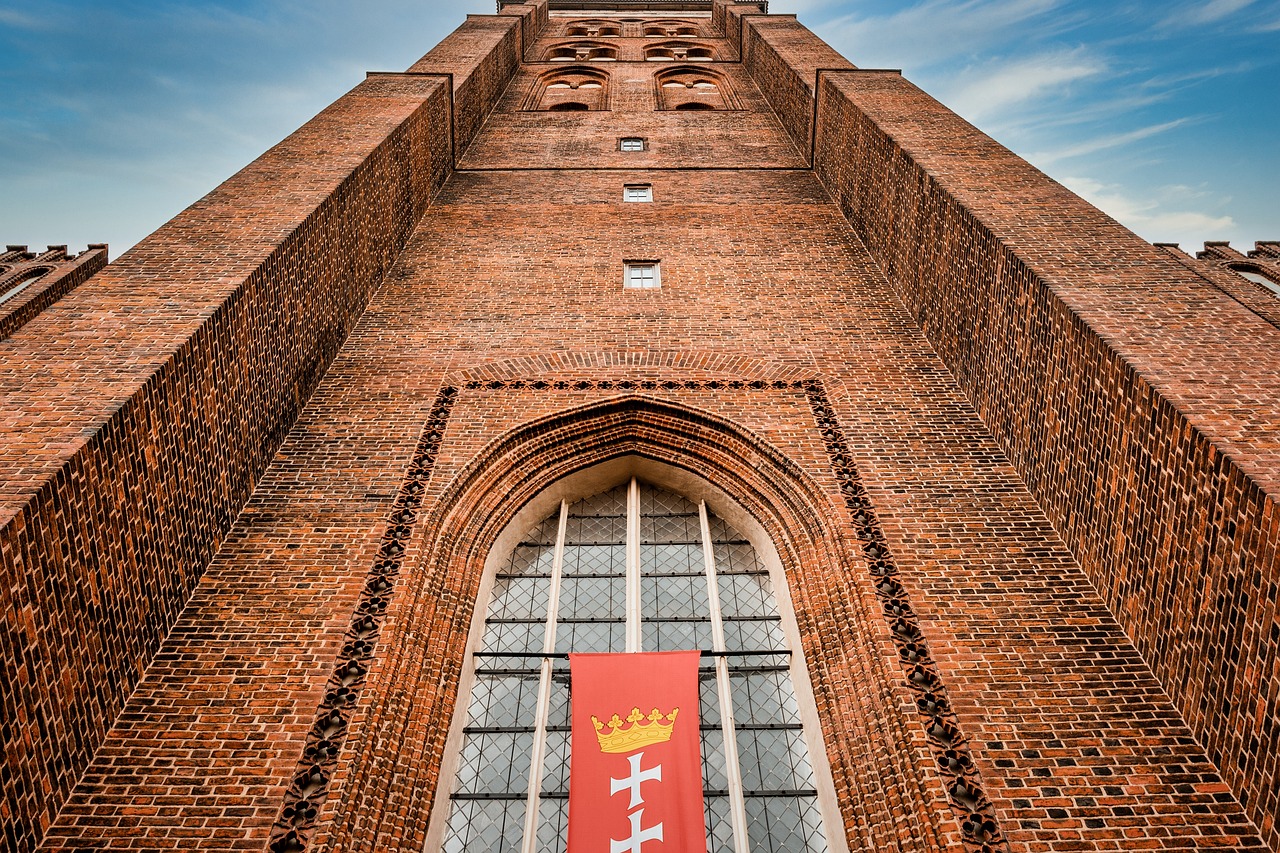
4. The Upland Gate: a seat of Pomorskie Tourist Board
The Renaissance Upland Gate is the former entrance to the town. Its representative function fully reflects the power and majesty of old Gdańsk. The main entry road led the greatest rulers of Poland and Europe through the gate; today, visitors heading to the Main Town are invited to take the same so-called Royal Route.
Until 1895, it was located within the line of sixteenth-century defensive walls between St Elizabeth Bastion and Bastion Karowy. The gate was designed by Flemish sculptor Wilhelm van den Blocke. On the upper part of the building, there are three coats of arms: in the middle, the coat of arms of Poland; to the right, the coat of arms of Gdańsk and on the left side, the one of Royal Prussia. An impressive heraldic sculpture - the emblem of the Republic of Poland on an oval shield, supported by two angels – always attracts the attention of tourists.
Today, Brama Wyżynna is house the Pomeranian Tourist Information Center (PCIT) and is the seat of the Pomorskie Tourist Board (PROT).
5. The Golden Gate. Count the statues on the top!
The Golden Gate resembles a Roman triumphal arch. It is a monument and an example of Gdańsk civil architecture since the military significance of the gate was minimal. Its rich ornaments were supposed to remind passing travelers about the city's wealth and indicate its source. Originally there used to be a medieval Gothic Long Street Gate on this very spot, which was demolished and replaced with more representative gate, not a defensive one. Since Long Street begins here, the term "Golden Gate" is not historically justified. However, the gate has become an architectural landmark of Gdańsk, and Polish kings used to pass through it.
The Mannerist style of the building refers to classical architecture and is shaped similarly to a triumphal arch. Both side of the gate are crowned with attics on which eight allegorical sculptures are placed. Statues on the west side symbolize the aspirations of the townspeople: Peace, Freedom, Happiness and Fame. On the eastern side, the sculptures symbolizing civic virtues such as Harmony, Justice, Piety and Prudence can be seen.
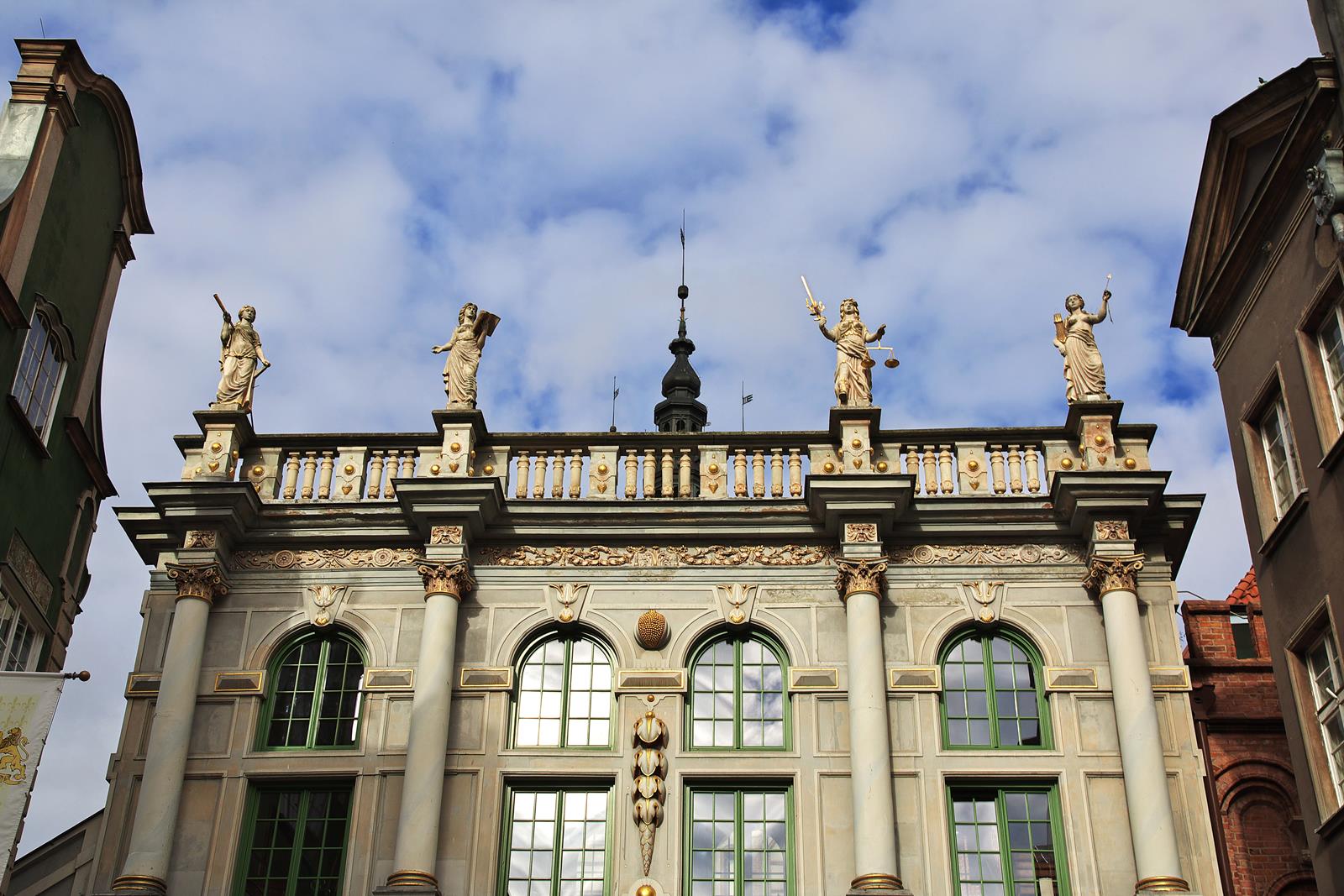
6. The Old Town Hall. Did you know that there are two town halls in Gdańsk?
The Main Town Hall is a monument of great value to the city. This Gothic-Renaissance edifice features one of the most beautiful Mannerist interiors in Northern Europe: the Red Hall. The building is located at the junction of Long Street and Long Market.
Its silhouette overlooks the skyline of the Royal Route. It is the second tallest building in the Main City, right after St Mary's Church. During the holiday season, you can climb up the tower, from where you will have spectacular view of the Main Town from an altitude of about 50 meters. The tower dome is finished with a metal, gilded statue of King Sigismund Augustus.
The Town Hall was once the seat of the municipal authorities of the most important area of Gdańsk, called the Main Town since the 14th century. From the mid-15th century, it became the center of power for the entire city and remained the seat of the council up to the year 1921. It is one of the few monuments in Gdańsk that survived the Second World War without significant damage. Today it is the seat of the Gdańsk Museum.
Interestingly enough, Gdańsk has another town hall - the Old Town Hall. Ask our guide about its purpose.
7. The Great Mill. The Amber Museum is located here.
The historic mill in the Old Town of Gdańsk is one of the largest medieval industrial facilities in Europe. It was driven by the waters of the Radunia river canal and carried out its duties for over 550 years, up until 1945. Located on the island near the Old Town Hall, the Great Mill today is recognized for its new role.
The mill was built in the 14th century by the Teutonic Knights. Its major purpose was not only grinding grain into flour; it was used as a storage (a granary) and a bakery as well. At the end of World War II, it was partially destroyed. Rebuilt in the 1960's, the building was adapted to new functions. Today it is the seat of the Amber Museum, where you can admire over a thousand objects. The largest amber nugget in the world - 68 kilograms of weight - from the Indonesian island of Sumatra can be found inside the museum collection.
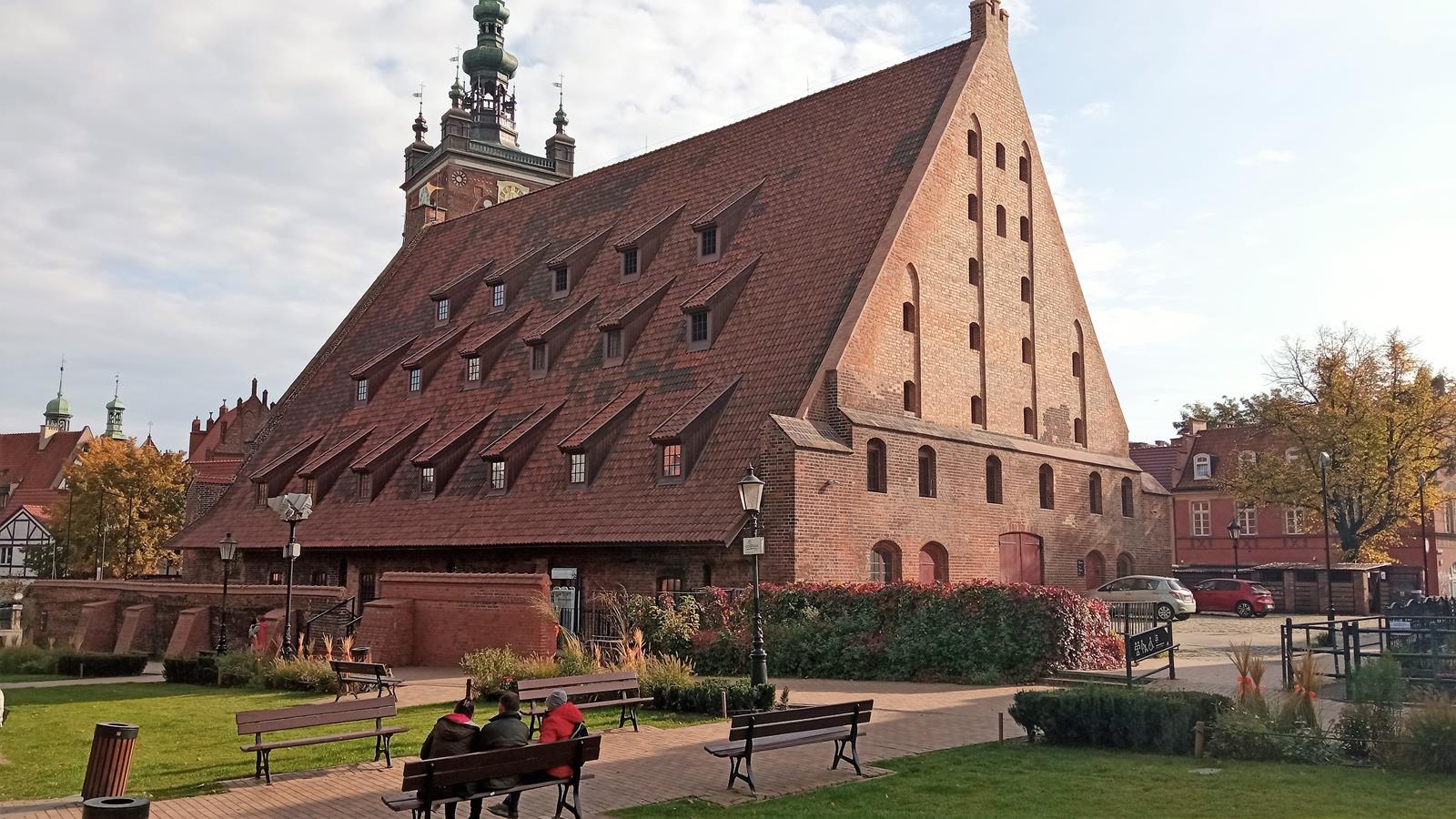
8. St Catherine's Church. How heavy is the carillon?
St Catherine’s Church was erected as one of the first sacral buildings in Gdańsk and, at the same time, the oldest parish church in the Old Town. The history of the temple dates back to the 12th century. The tower, with a beautiful Baroque cupola designed by Jacob van den Block, features a giant carillon from the year 1575. It is the largest carillon in Central Europe, with as many as 50 bells and weight over 15 tons. The melody of the bells can still be heard around the Old Town.
Church of St Catherine has suffered several fires. In 1905, lightning struck the church tower; as a result, the roof structure completely burned down, and the vaults collapsed. The fire also consumed the seventeenth-century cupola and the carillon from 1738. After World War II, during which the church was burnt down again, reconstruction was carried out.
Since then, numerous renovation and conservation works were undertaken in the temple. The whole process has been repeated after the fire in 2006 when the church roof burned down again. St Catherine’s Church stands out not only by the carillon and the collection of tower clocks, but also by the world's first pulsar clock, the most accurate clock in the world, built in 2011.
9. St Bridget's Church. What does it hide inside?
St Bridget's Church, sometimes called the 'amber basilica', is a temple of great importance to the inhabitants of Gdańsk. First and foremost, the church is associated with the contemporary history of Poland when it became a sanctuary of the Solidarity trade union. It is where the 1980' shipyard strikers found asylum and support from the parish priest.
The history of this church goes back to the 14th century. At the time, there was no church but a chapel dedicated to St. Mary Magdalene, where the remains of Bridget of Sweden were brought from Rome. Gdańsk was just a stop on the route of the funeral procession heading to Swedish town Vadstena. However, the event had such a great impact on the inhabitants of Gdańsk that it marked the beginning of St. Bridget cult, followed by establishing the first Bridgettine Convent in Gdansk in 1386.
Today, the church draws visitors due to the famous, monumental amber altar and... the skull chapel.
10. Gdańsk Shipyard. Where the Solidarity was born.
The Gdańsk Shipyard is one of the oldest and longest-operating industrial facilities in Pomerania. Its origins date back to the mid-nineteenth century. Established after the end of the Second World War in 1945, it replaced former German docks situated on the left bank of Martwa Wisła river and on Ostrów Island. Thus, it became one of the largest Polish shipyards. During the years of activity, over 1,000 fully equipped seagoing ships have been built there, including container vessels, passenger ships and sailboats.
The Gdańsk Shipyard, which once produced battleships, became the cradle of Polish freedom after the war. This is where the two most important strikes in the modern history of our country began: the tragic events of December 1970 and the victorious August of 1980, which, in the end, contributed to the fall of communism. The Shipyard gained worldwide fame as the birthplace of Solidarity movement. Its importance was emphasized in 2014 by receiving European Heritage Label award, granted to facilities that have played a special role in shaping culture and history.
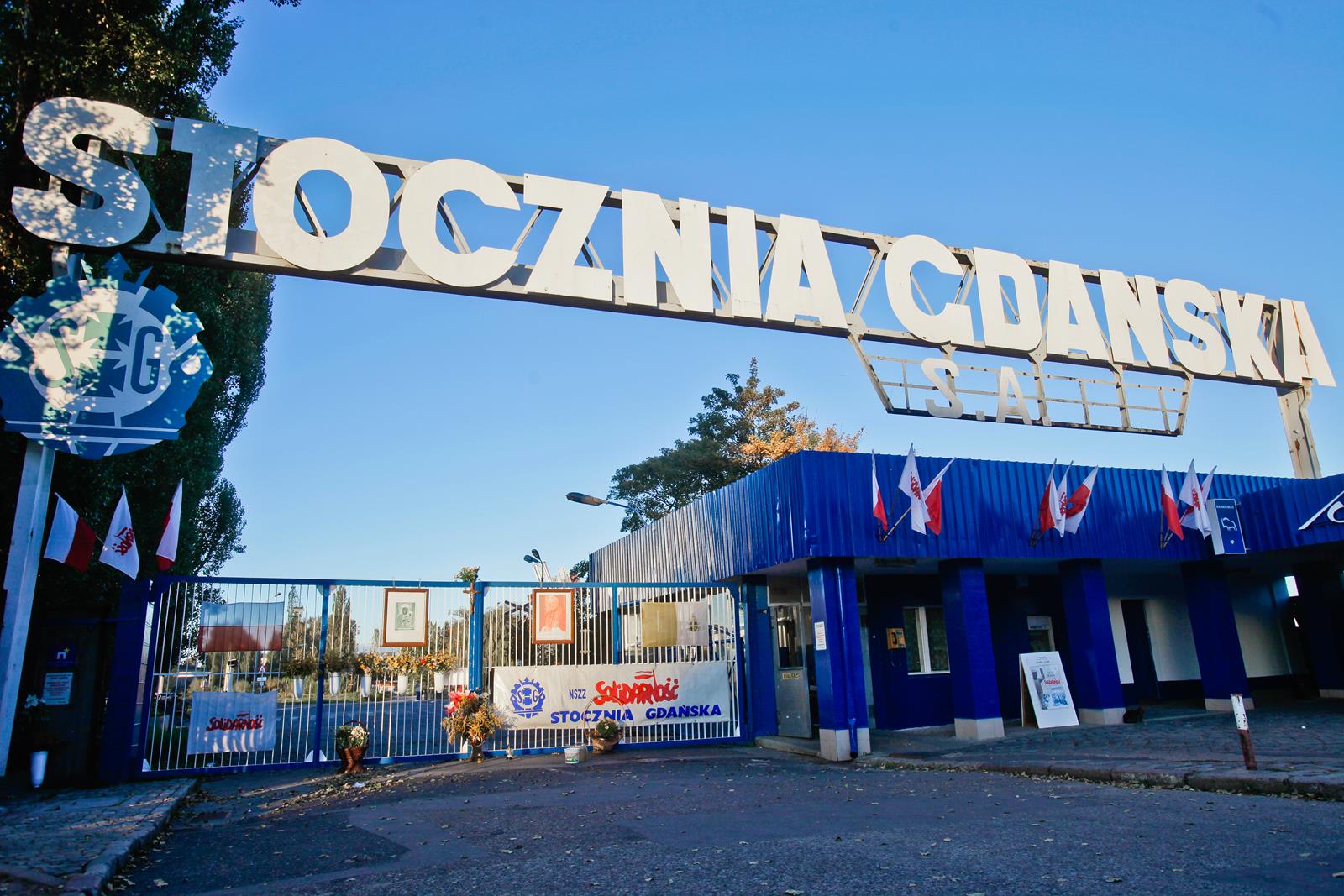
A very symbolic place is Gate No. 2, one of the entrances to the Gdańsk Shipyard. Due to its proximity to the management buildings and the railway station, it was considered the main entrance to the yard. After signing the August Agreements in 1980, the gate went down in history.
The Shipyard is no longer in use, however, it is still possible to visit the area. We can learn about, among other things, Solidarity from the exhibition displayed in the European Solidarity Centre right next to the shipyard.
We will be pleased to show you all the said places in Gdansk and discover even more of its secrets. You can learn about the mentioned attractions by choosing one out of two walking routes we designed: “The Royal Route and the Main Town corners” and “The secrets of the Old Town”. Both tours are available in Polish and English language. Check our offer and come with us!


